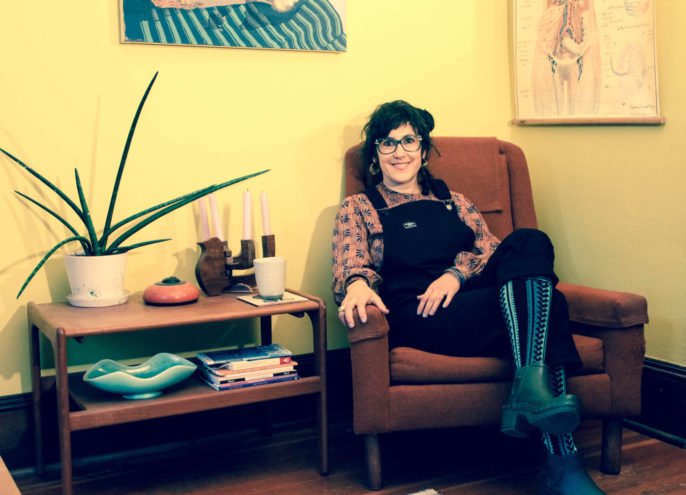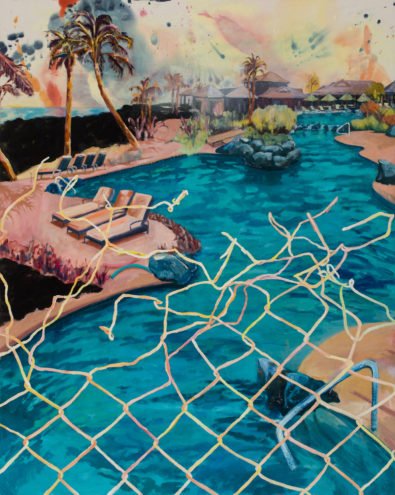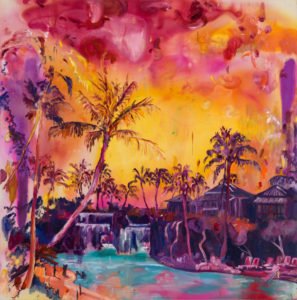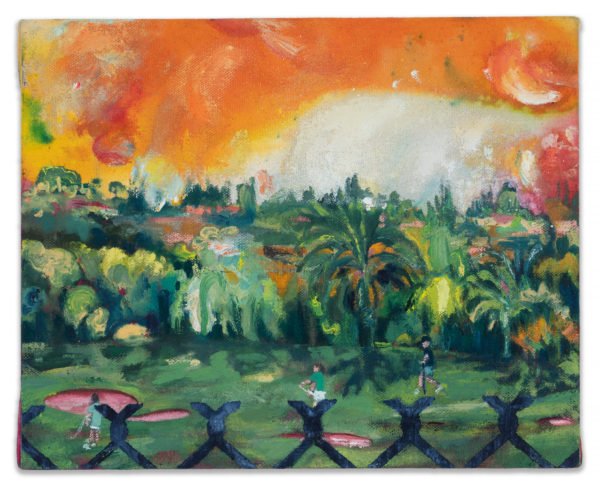Tia Factor


 Laurel Bonfiglio for Eleven: How long have you called Portland ‘home’? What keeps you inspired in the Pacific Northwest?
Laurel Bonfiglio for Eleven: How long have you called Portland ‘home’? What keeps you inspired in the Pacific Northwest?
Tia Factor: I moved to Portland in 2008 from the Bay Area via Tasmania, where I’d been living for a while, doing an artist’s residency. Portland inspires me with how much is happening in the creative community; how it’s a pretty small town but there’s always something fresh, some new art space that’s just opened-up, and a lot of great artists living here. And of course I love glimpsing snow-covered mountains from Portland and never being too far from stunning natural beauty.
11: Can you explain the concept of topophilia, the basis of your work? What brought this idea to your attention?
TF: In the few years after grad school someone who knew my work pointed me toward Yi-Fu Tuan’s book Space and Place. The book obsessed me with how well it gave form to so many previously unnamed ideas circulating around my work. It informed every project I made after that point. Topophilia is simply a convenient term that summarizes the idea that human beings are profoundly affected by place and the physical environments they find themselves in. Tuan defines topophilia as, “the effective bond between people and place or setting”. He says the term couples sentiment with place. I wanted to make art that both showed a place and expressed the underlying feelings about it, or the subjective experience of the individual in place.
 11: Does your focus on topophilia influence the way you experience new places?
11: Does your focus on topophilia influence the way you experience new places?
TF: If you are a human being, I believe topophilia is always at play while you are in any place. It’s just a matter of being introspective enough to notice the affect a place has on you, whether it’s a new place or one you’ve visited over and over. I think the concept of topophilia became especially interesting to me because I spent my early childhood in a very natural and fairly remote part of Northern CA. Then we moved across country and I spent the rest of my childhood in the suburbs of Chicago. After high school, I moved back to that rural place in Northern CA and spent my young adulthood there. Noting the profound differences I felt in who I was and how I felt based on my surroundings, it became clear that place matters. . .a lot!
11: What is the process of deciding on a location/ subject for your work?
TF: My process varies but always circulates around my own and others’ experiences of place. Sometimes I follow a trail, like hearing the philosopher Alain de Botton on the radio describe his writer-in-residence at Heathrow Airport inspired me to read his book The Art of Travel. That book in turn led me to develop a project in which I interviewed people I knew about places they’d visited and that they continuously fantasize about during off-moments. I made paintings of these places of fantasy based on our conversations. The paintings are both about the place and about my interaction with the interviewee, essentially a collaboration.
11: How does your incorporation of color and texture reference the emotional attachments to the places you paint?
TF: Color has a lot to do with why I love to paint. I work with the intensity and value of color both intentionally and intuitively. Before beginning a painting, I often decide on a limited range of hues that I feel get at some of the emotions present in the work. Similarly, creating a mostly dark or mostly light valued painting can get at the emotional state that’s the inspiration for the work. Mark-making, or what also reads as texture, like stains and hazed edges, scratchy, scrubbed marks, or thick, raised strokes, are all used to amplify the emotional state I’m after in the work.
11: In your collection Private Places, you were inspired by your experience in a gated community in Hawai’i. You also incorporate a lot of those ‘gates’ or ‘fences’ in your pieces. Is there some symbolism behind this choice of focus?
TF: Yes, for sure. I arrived on the big island just after Trump was elected. I was despondent about the election but elated about going to Hawai’I for my first time. When I discovered we were staying in a gated community, surrounded by an alien landscape of dried black lava fields, but constructed to fulfill the cultural fantasy we all have of a tropical paradise, I was shocked. Entering through the gate into this false world of affluence and privilege triggered something in me. Trump’s wall, and all walls around the world, that keep one group “safe” from the other, crystallized into an idea. The idea was the inverse of the project I’d been focused on up until that point, work dealing with communes or utopian experiments of the 60’s–80’s. Suddenly I saw this constructed environment in Hawai’i as its own utopian experiment, albeit a very conventional one. And I recalled something I’d read in the book Eden Within Eden: Oregon’s Utopian Heritage, in which Carolyn Merchant, an eco-feminist, posits that “today’s incarnations of Eden are the suburb, the mall, the clone, the World Wide Web”, the shopping mall (the ‘new main street’). The gated community and the internet are the latest visions of a reinvented Eden.”

11: When creating new pieces does the conceptualization of the individual piece come first or are the pieces inspired by the themes for a “collection”?
TF: The pieces are inspired by the overall project, or theme as you called it. I don’t have each painting worked-out in my mind in advance. I begin doing visual research which may take the form of interviews, taking pictures, or finding images on the internet. I do drawings from collected images to work out the compositions that are often composites from multiple sources. It’s empowering knowing that my work can go in any number of directions within the limited constraints I create for each project I’m working on.
11: Are you working on any new pieces? Where can we find some of your work?
TF: Currently I’m still making works within my Private Places series. I’m also working on a painterly-installation that will be up for the month of February in the PDX Window Project, which is part of PDX Contemporary’s 2019 program.





